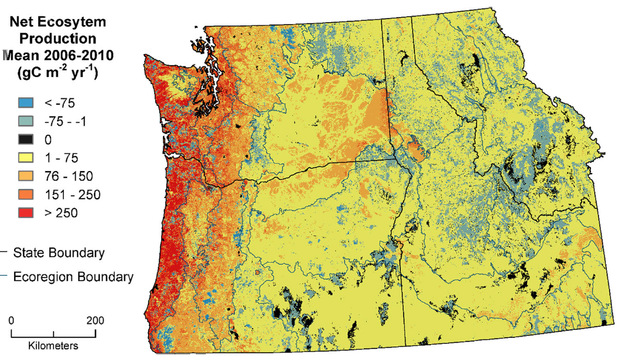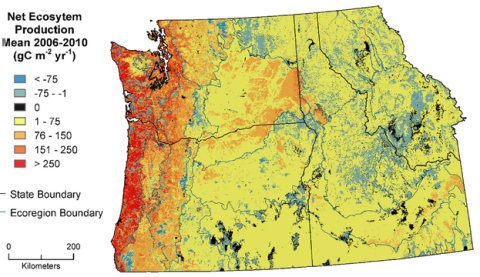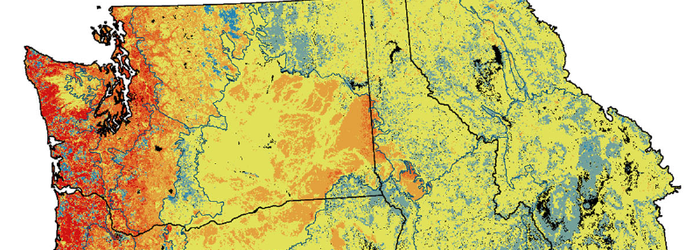Variations in climate, disturbances, and forest management are known to be strong influences on terrestrial carbon cycles. To better understand the terrestrial carbon cycle, and to estimate the potential for increased carbon sequestration, there is a need to quantifying carbon fluxes at not just a local and regional scale but at the intermediate scale, which is more difficult and uncertain. Process-based carbon cycle simulation models provide a means to estimate carbon cycles at these intermediate scales.
In a recent paper from David P. Turner, et al., investigators estimate carbon pools and flux by using the Biome-BGC model, a spatially distributed, process-based simulation model, to look at these larger domains. The paper, Regional carbon cycle responses to 25 years of variation in climate and disturbance in the US Pacific Northwest, looks at this region from 1986 to 2010 with the goal of an improved understanding of spatial and temporal heterogeneity in regional- and ecoregional-scale carbon stocks and flux.
The authors concluded from their study that the application of a spatially distributed carbon cycle process model, which integrates observations from meteorological stations, satellite-borne sensors, and forest inventory plots, is a viable approach to addressing these questions.
Read more:
Turner, D.P., Ritts, W.D., Kennedy, R.E. et al. 2016. Regional carbon cycle responses to 25 years of variation in climate and disturbance in the US Pacific Northwest. Reg Environ Change. 16: 2345. http://doi.org/10.1007/s10113-016-0956-9
Data Citation
Turner, D.P., W.D. Ritts, R.E. Kennedy, A.N. Gray, and Z. Yang. 2016. NACP Biome-BGC Modeled Ecosystem Carbon Balance, Pacific Northwest, USA, 1986-2010. ORNL DAAC, Oak Ridge, Tennessee, USA.
http://dx.doi.org/10.3334/ORNLDAAC/1317
Data center: ORNL DAAC
Sponsor: NASA EOSDIS



